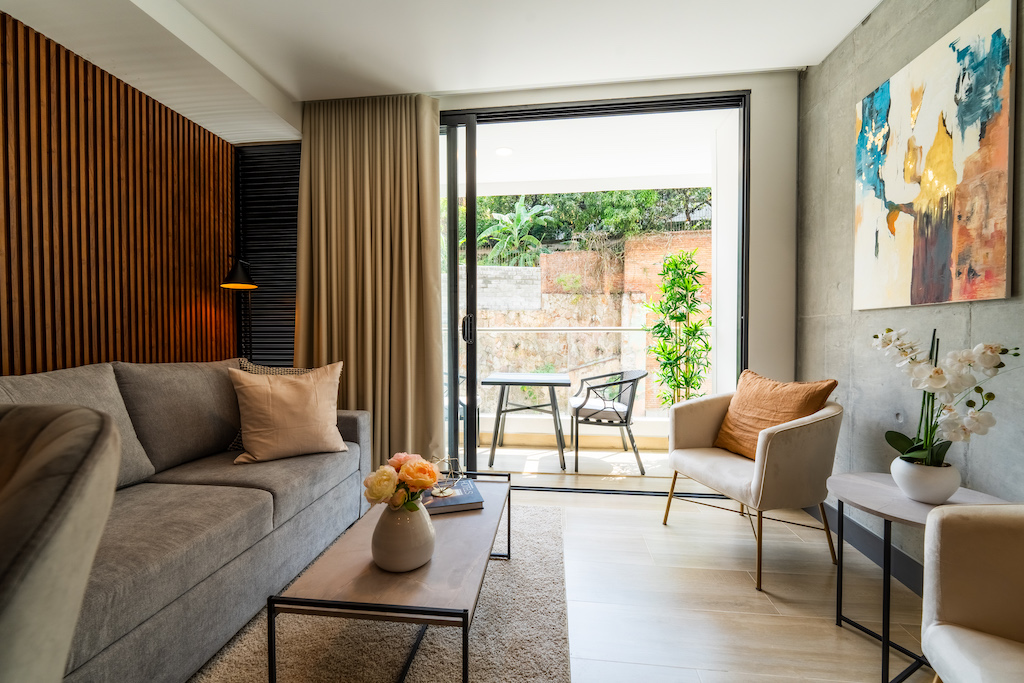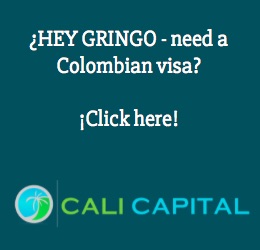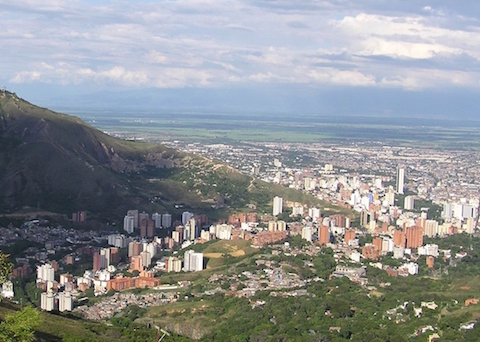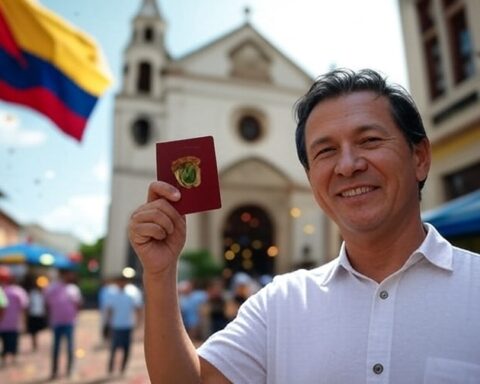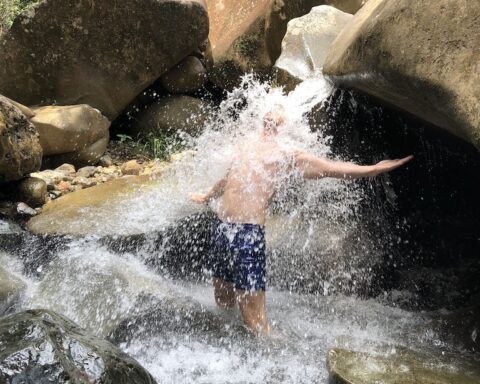9 years ago, in 2015, I wrote a post on how I was planning to earn a 75% ROI with an apartment on Airbnb in Cali, Colombia. Fast forward to 2024 and I have an update for you.
I have renovated or built from scratch 79 units for the short-term rental market in Cali. With my business partner in EXSTR, we currently operate 86 beautiful apartments and will most likely hit 120 units by the end of this year. We have one of the highest average ratings of 4.94 on Airbnb of any big operator in the entire country. I know that, because our Airbnb key account manager tells me on our monthly calls. I don’t say this to brag, but just to emphasize that I have been dedicating myself to this industry of vacation rentals for most of my work hours the past several years.
Today’s environment is a lot different compared to when I started. A lot more people have opened their eyes to this business model (worldwide), including the big builders, making competition stiff. High local interest rates (14-18%) diminish the returns of anyone who needs financing to participate. Lots of regulation has arrived, due to forceful lobby from COTELCO, the Colombian hotel association.
In other words, the easy money is gone. But that doesn’t mean the opportunity is gone… you just have to know where to look.
Still enormous growth potential
According to numbers from Migración Colombia, the entire country of Colombia receives around 4.6 million (2023) international travelers every year. Sounds like a lot. But to put that into perspective, Palma Airport on the Spanish island of Mallorca (less than 1/300th the size of Colombia) receives 31 million travelers per year with about 16.4 million of them coming from abroad.
Colombia is one of the most biodiverse places on the planet. Few countries come even close to it in terms of beauty, natural resources, fertile farmland, amazing weather, and its strategic location with access to two oceans. It is also very affordable – something Mallorca is not. To say there’s still room for tourism and business to grow here would be an understatement.
Sure, the country has it’s challenges. Political divide, fiscal instability, safety in certain places and lacking infrastructure being the majority of them. But after living here for almost 11 years, I can say that whatever happens, the Colombian people just keep pushing forward, determined to improve and overcome the stereotypical imagine of what this place is – and to make it better for the next generation.
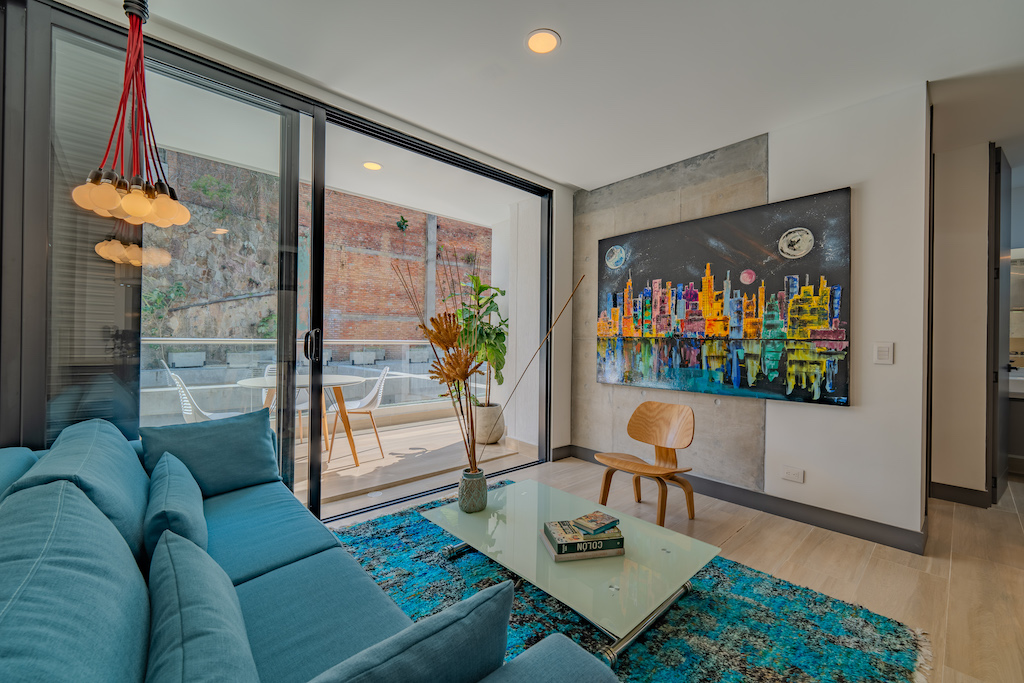
Different markets
Let’s be clear. Colombia is a big country with an enormous diversity in flora, fauna, topography, culture, food, climate and people depending on where you go. The same applies to the real estate and tourist markets.
No surprise, the main markets for short-term rentals are Cartagena, Medellin, Bogotá, Santa Marta, Barranquilla, Cali plus the Coffee region around Armenia, Manizales and all the little pueblos surrounding them. There’s a huge difference in the amount of travelers these destinations get, and what they are looking for on their trip.
Cartagena and Medellin attract the majority of the tourists while Bogotá and Barranquilla get a lot of business travelers. Cali is still an underdog getting only about 15% of the international tourists that Medellin gets. The Coffee region is one of the top tourist destinations in the whole country – but caters mostly to a domestic market.
Last month, I participated in a webinar held by the Colombian vacation rental association – Asohost – who together with the Pricelabs revenue management software was trying to predict the future of tourism for Colombia. The great news is that tourism grew 34% (2023 compared to 2022) and will most likely continue to grow at double digit rates for the next couple of years. The bad news for vacation rental hosts is that average occupancy across the entire market in 2023 was 27% and the average nightly rate a mere 22 USD. Hardly anything to get excited about.
That being said, it’s important to note, that there are departments (states) like Arauca, Vichada, Guaviare, Vaupes, Guainia, Putomayo, Casanare, that make up huge parts of the landmass in Colombia but get very little tourists. My bet is, that those outliers damaged part of the statistics. But don’t take my word for it. You can and should investigate your target market before deciding and tools like AirDNA and AllTheRooms make it a lot easier than it was previously.
Our portfolio in Cali, which is a mix of studios and 1-4 bed apartments, averages about 70% occupancy and close to $72 USD per night or about 3 times better than the national stats from Pricelabs.
That doesn’t mean Cali is the best place to be. Markets like Medellin and Cartagena have high nightly rates and good occupancy most of the year, but also a lot of competition. Bogotá is an interesting place. Nice, small studio units are almost give-away while fancy five star hotels get anywhere from $150-400 USD per night. It’s very obvious that it’s a location mostly for business travelers. If I was getting into that market, I would focus on bigger, high-end luxury apartments targeted at executives, diplomats and the likes.
Santa Marta caters mostly to beach lovers and the coffee region receives a lot of families in big vacation houses.
Airbnb does not reveal a lot about the market in Colombia, but in the US it is easier to find information.
All the top 51 most wishlisted properties on Airbnb in the US are rural properties, except for a condo in Washington DC. Many of them are highly unique homes like treehouses, castles, yurts, lighthouses, glamping, A-frames, etc. Even though these numbers are from 2021, this should be an indicator that many guests are looking to disconnect with a special experience close to nature, and that they are willing to travel to get there. If there’s something Colombia has plenty of, it’s access to nature, making this strategy something worth considering. By going this route, it’s also a lot easier to stand out compared to offering a studio apartment in saturated market in a big city. Depending on where you look, it can also be a lot more affordable to get started.
Take a look below – buying land in Pasto, Sasaima or San Francisco is most certainly cheaper than that high-rise condo in Medellin. But they still manage to end up on the first page of search results, and they all get great reviews and good nightly rates. But I’d argue that the rural properties shown here get a better nightly rate relative to their upfront investment.
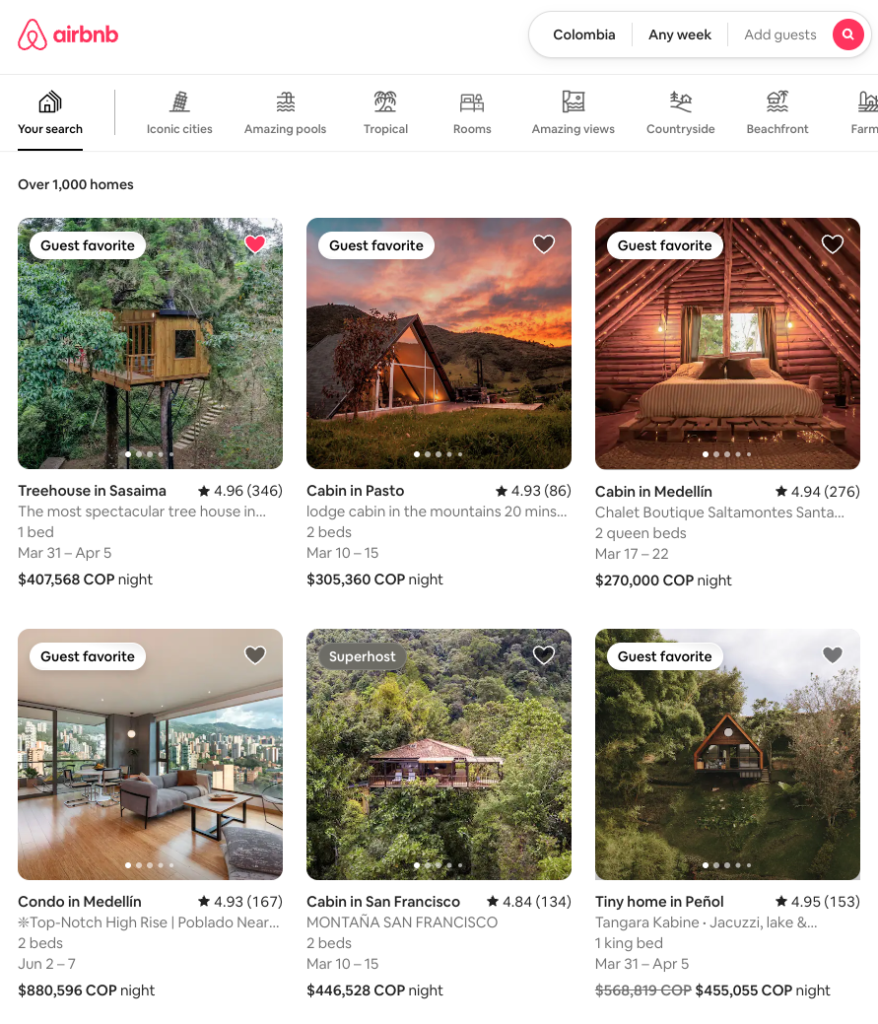
Your niche
Once you have decided which market you want to focus on, then decide what kind of guest you are looking to attract. The more specific you get, the more successful you will be.
Casa Duvélo between Filandia and Quimbaya in Quindío is a great example. They cater exclusively to well-off cyclists who want to ride the gorgeous rolling hills around the Coffee district. By doing this one thing really well, they have been able to attract guests from all of Colombia and even the world. Though more of a boutique hotel than a vacation rental property the strategy is the same. They found a niche that no one was currently serving in that area. They built a place – an architectural pearl – and began offering rockstar service to their specific guest avatar. For a cyclist that means bike rentals, cleaning and maintenance. But also nutritious food, post-ride massages, and great beds to ensure a speedy recovery. In return, they are getting raving reviews, high nightly ratings and above average occupancy from a clientele with a strong purchasing power. It’s a winning combination.
You can do the same by targeting sports fishermen on the coast, medical tourists in the city, horse-lovers in the countryside, volcano hikers, golfers, athletes, yogis, stargazers, or bird watchers. The more specific you get, the better. But even something more broad like targeting families, party people, digital nomads or romantic getaways will work a lot better than just having a random unit in a random location without any set strategy.
Casa Duvélo was just an example. Don’t be intimidated by it if you don’t have the funds to develop a fancy boutique resort. Remember this clay hut in Arizona is one of the most wishlisted properties in the entire United States. Super basic and cheap to build, but still a very unique experience that you can turn into wonderful five star reviews and great revenue, as long as you do it right.
Once you have made your choice, then make sure to stand out by making it appealing to the eye and offering a better service than anyone else. In the city, location is king, but in the countryside it doesn’t really matter as long as it’s cozy, pretty, idyllic, or interesting. Of course, if you’re catering to volcano hikers, then logically, you shouldn’t be too far away from the volcano.
Pricing Power
Choose a niche where you can have pricing power by offering something unique. Latinos are legendary copy cats. Just as an example, I live near a street where there are probably 15 ladies selling grilled corn on the cob every afternoon. Same thing happens with the offer on Airbnb.
A basic course in market supply and demand will teach you that when there are many sellers of a homogenous product, the competition becomes a race to the bottom as the only thing they can compete on is price. Don’t be the person that gets into that game. You will end up working hard for very little occupancy and profit.
By contrast, if you have a pretty 4-bedroom apartment with a prime location, then you’re automatically standing out. Add a jacuzzi and then it becomes even more attractive. And suddenly, you’re selling for $700.000 COP per night with high occupancy instead of scrambling to fill you studio at $89.000 COP.
Take a look at this search for a 4-bed property in Cali for a random week. The guest favorite listing in the top left corner is ours. First unit on the same page (accident?). The results drop from 4000+ units to 195 compared to if I was just looking for a 1-bedroom unit. And the 1-beds compete directly with all the hotels in the city which makes it even harder.
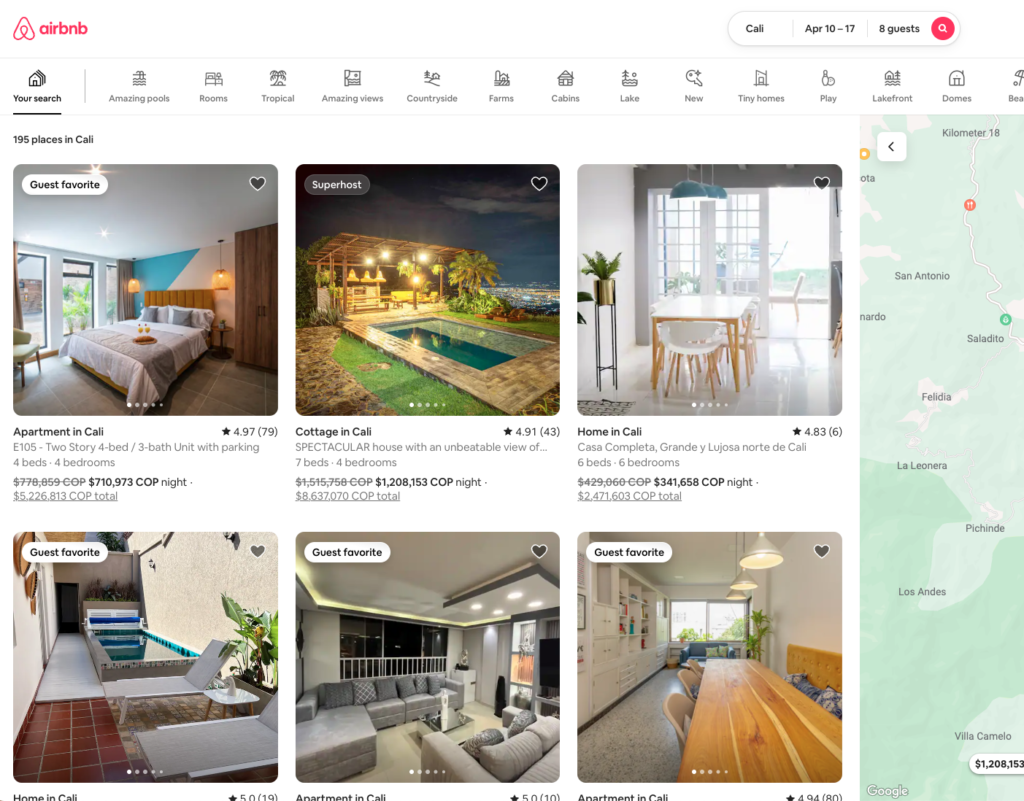
I know this is a shameless plug and I am just using this as an example. 195 listings is still a lot of competition so you still have to stand out. Most guests book based on a few important criteria:
- Availability for their dates of travel.
- Being on one of the first pages of search results.
- Location based on the reason for visiting – especially in a big city.
- Pictures. One picture is a thousand words and most people are very visual.
- Price vs budget in mind.
- Amenities.
- Reviews. Is anyone booking anything below 4.5 on Airbnb? On Booking.com anything above 8.0 is considered good.
- Response times from the host. You snooze, you lose.
When you search on Airbnb and add filters, the platform will even show you what amenities are in high demand for your particular area. These will change depending on where you move the map. Use this to your advantage.
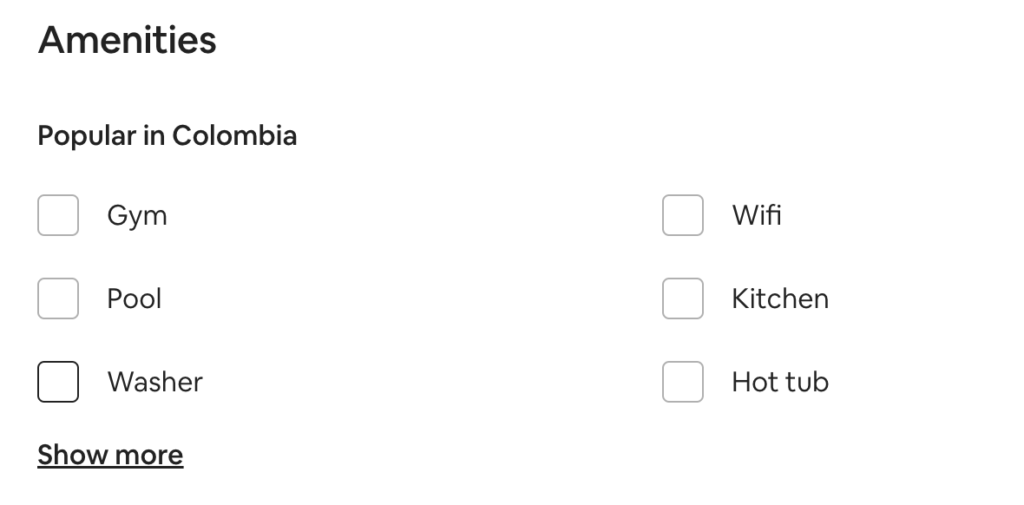
So if you have the best pictures, raving reviews, a great location, high ranking on the platform, fast response times and availability for guest, then your likelihood of getting a reservation grows tremendously… because it’s all about the clicks.
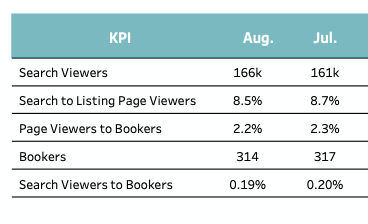
The above table comes from our key account manager with Airbnb and it shows how good (or bad) we are at converting our clicks to reservations. The numbers are from August and July 2023. In August, 166.000 potential guests saw our listings in the search results. 8.5% of them clicked the listing and 2.2% of the ones that clicked ended up booking. Of all our search viewers we managed to turn only 0.19% into reservations. So make sure you earn those first clicks if you want to have any chance.
Looking at the screenshot of the Airbnb search results above, your best chance of earning that first click starts with really good pictures. So don’t be silly by investing $100.000 USD into an property and then trying to save $100 USD on the pictures. It makes absolutely no sense, yet I see so many people do it.
Septihambre – understand the seasons
If you’re new to this business, then it’s important that you understand the seasonality of whatever market and niche you decide to operate in.
Septihambre (abbreviation of September + hunger in Spanish) was a term I heard from a friend of mine who rents out luxurious boats in Cartagena. September is notorious for being very low slow for tourism in Cartagena and also Cali, but it comes right after most people go back to work and study in mid-August. But if you’re renting to executives in Bogotá the opposite might be true as everyone is going back to work. If you’re building a sport fishing cabin on the Orinoco river, then maybe there are seasons where the fish are spawning and the practice is prohibited.
Stay informed to avoid surprises.
I see many investors and operators get desperate the first time they encounter low occupancy. Especially those who are investing with toxic debt, which is a reminder to make sure you always have a cushion.
Slow season it not to be feared, at least not if you’re prepared. See it as a chance to get creative and try out new things. Just like the ski resorts that figured out that they could target mountain bikers and hikers in the summer. Also, it’s a great opportunity to get maintenance done on your property or let your staff take some time off. Charge your batteries and be ready when things take off again.
How to go about financing
Colombia is mostly a cash-buyers market. Financing here is hard, and even more so for foreigners. I’ve been here for 11 years and have never had a loan with the bank except for my credit card. The current environment with local interest rates as high as 20% also means getting into debt here would make you a slave to the bank. If you are even considering financing at these rates, then it’s better to wait it out and accumulate more savings before you get started.
That being said…
You may have additional sourced of unexplored funds that you can tap into. Many Americans have a self-directed IRA (pension) which can be used to invest in real estate, even outside the US.
Maybe you have a home with a lot of equity somewhere else and are able to leverage that equity for a loan at more attractive interest rates.
Finally, you could partner up with an investor or group of investors and make a pitch if you have a great idea. More on that in a future post.
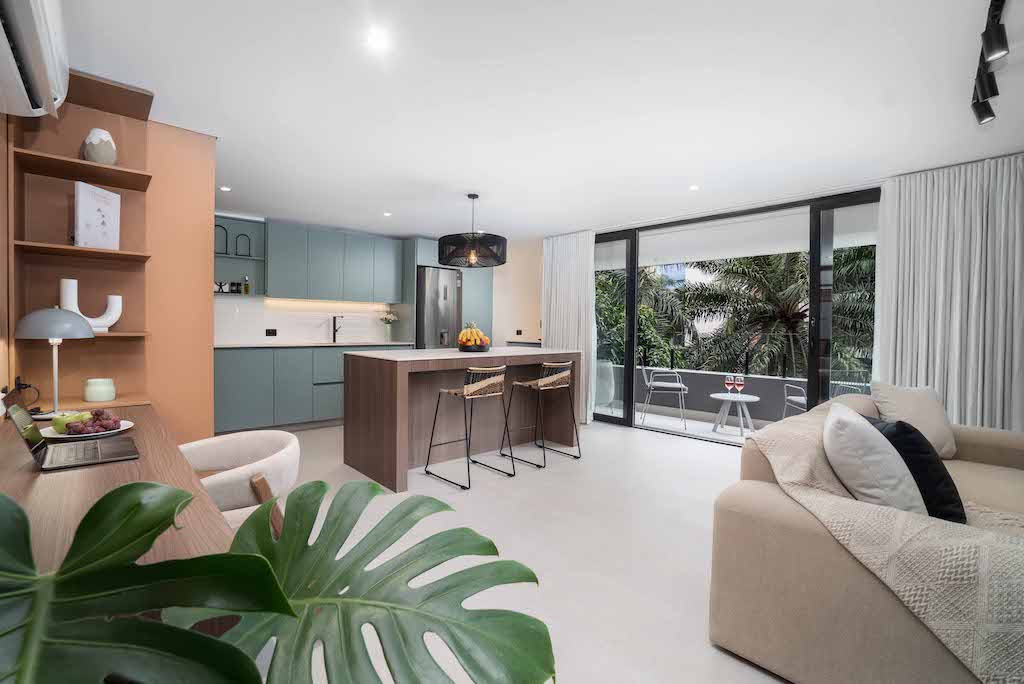
Regulation for short term rentals in Colombia
When offering any sort of accommodation in Colombia, even if just a simple cabin in the woods, you have to play by the same rules as the hotels. This may not seem fair, but it’s a result of heavy lobbyism from a hotel industry that feels threatened by sudden growth of the short-term rentals. The best overview of the regulation is to be found on the Asohost site, though only provided in Spanish and comes with a lot of legal lingo. They also offer courses on how to get started.
There is still a great deal of informality in this industry, which will most likely change over the coming years, especially in the bigger cities. My invitation is to comply from the beginning to avoid trouble in the future.
For your convenience I have compiled a list that will make sure you’re compliant with the majority and ready to receive a visit from the tourism police, if that should ever happen.
RUT – Registro Único Tributario
This is your tax ID and needed to do business in Colombia. You can obtain it from the Colombian tax authorities, known as la DIAN. If this is overwhelming for you, then get an accountant to help you. If getting into short-term rentals then make sure that the CIIU number 5519 added as one of your economic activities.
RNT – Registro Nacional de Turismo
This is a certificate that confirms you have registered your property for short-term rental with the chamber of commerce. This a legal requirement and you will not be able to publish on Airbnb in Colombia before you have this number. You can apply here.
TRA – Tarjeta de Registro de Alojamiento
This is a form that you fill out and file with the Colombian Ministry of Commerce and Tourism. You need to report the value of each reservation, how many nights, etc. This is a fairly new invention and I imagine it was created to combat tax evasion. You can learn more about it on the government website here. They do weekly webinars teaching users how to operate the platform.
SIRE – Reporte de Extranjeros
All foreign guests in Colombia must be registered in this portal with Migration. It’s essentially a platform giving the authorities an idea of the whereabouts of any tourist in the country. I was told by Tourism Police that they use the platform to cross information with Interpol and if anyone is on the “most wanted” list then the authorities will show up at your establishment. It has happened to us twice in about 8000 reservations and has never caused any issues for us. But the penalties for not reporting on time are huge so I highly encourage your to comply.
ID & Contract
You have to request an ID – passport or cédula – from all guests staying at your property. Guests should also sign a contract that they agree to the terms and conditions of your establishment. All hotels do this as well. You fill out a form upon arrival and the terms are usually printed with such small letters that you don’t bother reading it before signing. We get a lot of resistance on this one but it’s a non-negotiable from a legal perspective. I’ve heard the the government plans to replace the contract with the TRA. Let’s see. But you should still always ID people.
Warn against the sexual exploitation of minors
Sex tourism is (unfortunately) a big thing worldwide and Colombia is no exception. As a host, you have a responsibility to verify that no minors are one your premises without their parents or legal guardians. You also have to inform them that you follow a code of conduct according to the Colombian Law 1339 of 2009. Additionally, you have to inform guests that the sexual abuse of minors is penalized with up to 35 years in prison according to article 17 of Law 679 of 2001 and article 217A of Law 599 of 2000.
The best way to inform the guests is by including it in the contract and also in print at your facility.
Hotel insurance
Any establishment open to guests is supposed to have a hotel insurance. It’s essentially a third party liability coverage in the event of guests suffering an accident, disease or even death at your facility.
Colasistencia has the cheapest and easiest way to acquire this for your guests. Prices are about $1600 COP ($0.40 USD) per guest, per night. You can read more about their product here.
Please note, this is NOT the same insurance that protects your property against theft, fire, earthquake.
If all of the above sounds like a lot, then I agree – it is! The good thing about these formalities is that it will dissuade many people from getting into the business, giving a competitive advantage to ones who are able to jump all the hurdles. There are ways to automate many of steps and I’m sure more will come. One platform that caught my attention the other day was Hospy that claims to automate the rental agreement, TRA and SIRE which are some of the biggest pain points. I have not tried the product myself so make sure to ask for a demo before signing up. We are currently in the progress of migrating our property management software to KUNAS, but we haven’t gone live yet so I will save my thoughts for part 3.
Finally, labor is still very affordable in Colombia, which means having an assistant to help with these tasks is within reach for many hosts.
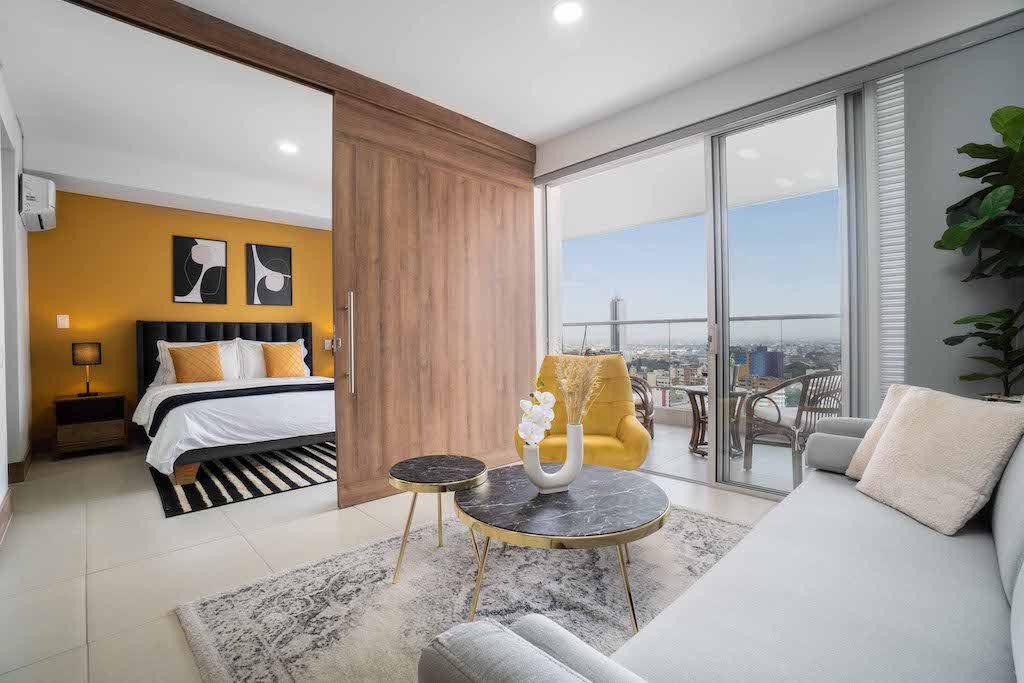
Foreigners can use the investment to obtain a Colombian visa
If living in Colombia long-term is a goal, then buying local real estate is one of several ways to obtain a visa. Property with a value of at least 350x the legal minimum wage qualifies. For 2024 that number is $455 million COP, the equivalent of about $116.000 USD at the current exchange rate. This kind of investment gives you access to the Colombian M-category renewable migrant visa with a duration of up to 3 years. If you need help, then let me know and I will happily connect you to a bilingual visa agent.
Final notes
This business is most certainly not for everyone.
Do you like dealing with people? The daily grind of this business is hospitality. If hate the idea of dealing with any aspect of customer service then best to decide on another type of real estate investing – like renting warehouses (which is very hand-off) – or hire a profesional property manager to deal with it for you.
The majority of people are good and reasonable. But there will still be late night emergencies caused by impossible guests, party people, drug addicts, sex tourists plus unforeseen issues like clogged toilets, TVs that don’t work, failing WiFi, energy cuts, water suspensions, and this does not include the non-stop cleaning / maintenance of your property. Reputation is everything in this industry and if you don’t deal with these problems in a correct and timely matter, you ratings will go down, and as a result affect your revenue.
With the above warning in mind… if you’re still excited about investing in properties for Airbnb in Colombia, then:
Stand out with whatever you decide to do. Spend time thinking about who you want to serve. Being average won’t cut it anymore. Forget about downtown studio apartments. It’s too crowded and you will be in direct competition with all the hotels. If the city is your focus, then consider looking at secondary markets like Neiva, Tunja, Bucaramanga, Montería, Armenia, Pereira, Manizales, Yopal which have a lot less competition. That was also the case when we started out in Cali. If the market is good enough, competition will eventually arrive, but by then you will have established yourself as the big fish in the local market.
Don’t forget to invest in quality photography, mattresses and pillows. Make good listing descriptions. Even if most people don’t read them.
Water attracts. If you have a river / lake / ocean / waterfall in your backyard or nearby then make sure to highlight this in your listing. If not, then maybe you can add a jacuzzi / pool / plunge pool / outdoors shower. Great views and outdoors spaces are also a major plus.
If decoration isn’t your strong side, then get inspiration by looking up cool designs on Instagram and Pinterest. Colombia is still a very developing economy. Lots of things have yet to arrive here. Use colors or other types of wall art. It is a cheap way to make your property stand out in the pictures. Doesn’t need to be an original Andy Warhol for it to work.
Don’t rely exclusively on Airbnb. You have to be multi-channel these days or at least be able to attract direct reservations. One small (accidental) violation of Airbnb’s policy can shut your business down overnight with no compensation. On top of that, these OTAs (online travel agencies) also charge high commissions from professional hosts. We pay Airbnb 15% + sales tax for a total of 18%. Booking.com is about the same.
And most importantly: Take action. Most people are just dreamers.
Leave your questions below and I will respond or use them for Part 3 of Airbnb in Cali and Colombia.
Best of luck!

